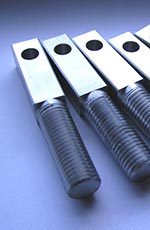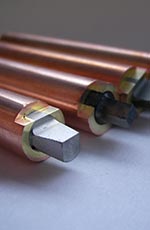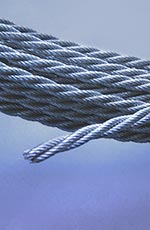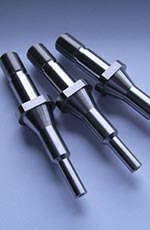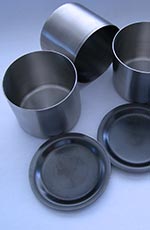Tungsten-Copper
(WCu) [also named Copper-Tungsten CuW]
Tungsten-Copper (WCu) is a composite material with a heterogeneous structure. Typically, a porous blank is produced by pressing and sintering tungsten powder. The remaining pores are sealed by immersing in liquid copper (=infiltration). Furthermore, the production of WCu can also be carried out by means of liquid-phase sintering. Depending on the grain size of the W-powder as well as pressing and sintering parameters, various contents of Tungsten respectively Copper can be selected. Tungsten-Copper combines many typical characteristics of the single elements Tungsten and Copper as for example the hardness, wear and burn-off resistance of Tungsten together with good electrical and thermal conductivity of Copper. Significant Characteristics and Applications:
- good machinability
- high density
- very good dimensional stability
- low coefficient of expansion
- high surface quality
- high wear resistance
- high thermal conductivity
- high burn-off resistance
Tungsten-Copper is used for example for eroding electrodes (EDM), electrical contacts, medium and high voltage breaker (SF6), welding electrodes (contact / resistance welding), balancing weights and others. Tungsten-Copper is frequently used as an electrode material, in case that the typical copper contact materials (e.g. Copper-Chrome-Zirconium CuCrZr and others) have reached their limits.
ASTM Standard Specifications:
ASTM B702 (Copper-Tungsten Electrical Contact Material)
Range of Products:
Rods, squares, plates, foils and sheets small tubes, contacts and finished parts according to drawings.



